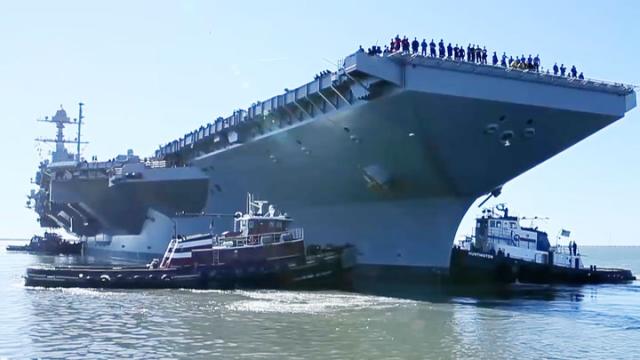The New York Times
Facing a Dire Storm Forecast in Florida, Officials Delayed Evacuation
Frances Robles – October 1, 2022

FORT MYERS, Fla. — As Hurricane Ian charged toward the western coast of Florida this week, the warnings from forecasters were growing more urgent. Life-threatening storm surge threatened to deluge the region from Tampa all the way to Fort Myers.
But while officials along much of that coastline responded with orders to evacuate Monday, emergency managers in Lee County held off, pondering during the day whether to tell people to flee, but then deciding to see how the forecast evolved overnight.
The delay, an apparent violation of the meticulous evacuation strategy the county had crafted for just such an emergency, may have contributed to catastrophic consequences that are still coming into focus as the death toll continues to climb.
Dozens have died overall in the state, officials said, as Ian, downgraded to a post-tropical cyclone, moved through North Carolina and Virginia on Saturday, at one point leaving nearly 400,000 electricity customers in those states without power.
About 35 of Florida’s storm-related deaths have been identified in Lee County, the highest toll anywhere in the state, as survivors describe the sudden surge of water — predicted as a possibility by the National Hurricane Service in the days before the storm hit — that sent some of them scrambling for safety in attics and on rooftops.
Lee County, which includes the hard-hit seaside community of Fort Myers Beach, as well as the towns of Fort Myers, Sanibel and Cape Coral, did not issue a mandatory evacuation order for the areas likely to be hardest hit until Tuesday morning, a day after several neighboring counties had ordered their most vulnerable residents to flee.
By then, some residents recalled that they had little time to evacuate. Dana Ferguson, 33, a medical assistant in Fort Myers, said she had been at work when the first text message appeared on her phone Tuesday morning. By the time she arrived home, it was too late to find anywhere to go, so she hunkered down with her husband and three children to wait as a wall of water began surging through areas of Fort Myers, including some that were well away from the coastline.
“I felt there wasn’t enough time,” she said.
Ferguson said she and her family fled to the second floor, lugging a generator and dry food, as the water rose through their living room. The 6-year-old was in tears.
Kevin Ruane, a Lee County commissioner and a former mayor of Sanibel, said the county had postponed ordering an extensive evacuation because the earlier hurricane modeling had shown the storm heading farther north.
“I think we responded as quickly as we humanly could have,” he said.
Gov. Ron DeSantis and his state emergency management director also said the earlier forecasts had predicted the brunt of the storm’s fury would strike farther north.
“There is a difference between a storm that’s going to hit north Florida that will have peripheral effects on your region, versus one that’s making a direct impact,” DeSantis said at a news conference Friday in Lee County. “And so what I saw in southwest Florida is, as the data changed, they sprung into action.”
But while the track of Hurricane Ian did shift closer to Lee County in the days before it made landfall, the surge risks the county faced — even with the more northerly track — were becoming apparent as early as Sunday night.
At that point, the National Hurricane Center produced modeling showing a chance of a storm surge covering much of Cape Coral and Fort Myers. Parts of Fort Myers Beach, even in that case, had a 40% chance of a 6-foot-high storm surge, according to the surge forecasts.
Lee County’s emergency planning documents had set out a time-is-of-the-essence strategy, noting that the region’s large population and limited road system make it difficult to evacuate the county swiftly. Over years of work, the county has created a phased approach that expands the scope of evacuations in proportion to the certainty of risk. “Severe events may require decisions with little solid information,” the documents say.
The county’s plan proposes an initial evacuation if there is even a 10% chance that a storm surge will go 6 feet above ground level; based on a sliding scale, the plan also calls for an evacuation if there is a 60% chance of a 3-foot storm surge.
Along with the forecasts Sunday night, updated forecasts Monday warned that many areas of Cape Coral and Fort Myers had between a 10% and a 40% chance of a storm surge above 6 feet, with some areas possibly seeing a surge of more than 9 feet.
Over those Monday hours, neighboring Pinellas, Hillsborough, Manatee, Sarasota and Charlotte counties issued evacuation orders, while Sarasota County announced that it expected evacuation orders to be in effect for the following morning. In Lee County, however, officials said they were waiting to make a more up-to-date assessment the following morning.
“Once we have a better grasp on all of that dynamic, we will have a better understanding about what areas we may call for evacuation, and, at the same time, a determination of what shelters will be open,” the Lee County manager, Roger Desjarlais, said Monday afternoon.
But forecasters with the National Hurricane Center were growing more explicit in their warnings for the region. In a 5 p.m. update Monday, they wrote that the highest risk for “life-threatening storm surge” was in the area from Fort Myers to Tampa Bay.
“Residents in these areas should listen to advice given by local officials,” the hurricane center wrote. New modeling showed that some areas along Fort Myers Beach were more likely than not to see a 6-foot surge.
Ruane, the county commissioner, said that one challenge the county faced was that the local schools had been designed to be shelters and that the school board had made the decision to keep them open Monday.
By 7 a.m. Tuesday, Desjarlais announced a partial evacuation order but emphasized that “the areas being evacuated are small” compared with a previous hurricane evacuation.
The county held off on further evacuations, despite a forecast that showed potential surge into areas not covered by the order. Officials expanded their evacuation order later in the morning.
By the middle of the afternoon, Lee County officials were more urgent in their recommendation: “The time to evacuate is now, and the window is closing,” they wrote in a message on Facebook.
Katherine Morong, 32, said she had been prepared earlier in the week to hunker down and ride out the storm based on the guidance from local officials. The sudden evacuation order Tuesday morning left her scrambling, she said, as she set out in her car in the rain.
“The county could have been more proactive and could have given us more time to evacuate,” she said. On the road toward the east side of the state, she said, she was driving through torrents of rain, with tornadoes nearby.
Joe Brosseau, 65, said he did not receive any evacuation notice. As the storm surge began pouring in Wednesday morning, he said, he considered evacuating but realized it was too late.
He climbed up a ladder with his 70-year-old wife and dog to reach a crawl space in his garage. He brought tools in case he needed to break through the roof to escape.
“It was terrifying,” Brosseau said. “It was the absolute scariest thing. Trying to get that dog and my wife up a ladder to the crawl space. And then to spend six hours there.”
Some residents said they had seen the forecasts but decided to remain at home anyway — veterans of many past storms with dire predictions that had not come to pass.
“People were made aware, they were told about the dangers and some people just made the decision that they did not want to leave,” DeSantis said Friday.
Joe Santini, a retired physician assistant, said he would not have fled his home even if there had been an evacuation order issued well before the storm. He said that he had lived in the Fort Myers area most of his life, and that he would not know where else to go.
“I’ve stuck around for every other one,” he said.
The water rushed into his home around dusk Wednesday night, and Friday, there was still a high-water mark about a foot above the floor — leaving Santini a little stunned. “I don’t think it’s ever surged as high as it did,” he said.
Lee County is now an epicenter of devastation, with mass destruction at Fort Myers Beach, the partial collapse of the Sanibel Causeway and entire neighborhoods reduced to rubble. With water mains broken, the county utilities agency has advised residents to boil their water.
President Joe Biden said Friday that the destruction from the storm was likely to be among the worst in U.S. history.
“It’s going to take months, years to rebuild,” he said.


 Scroll back up to restore default view.
Scroll back up to restore default view.


